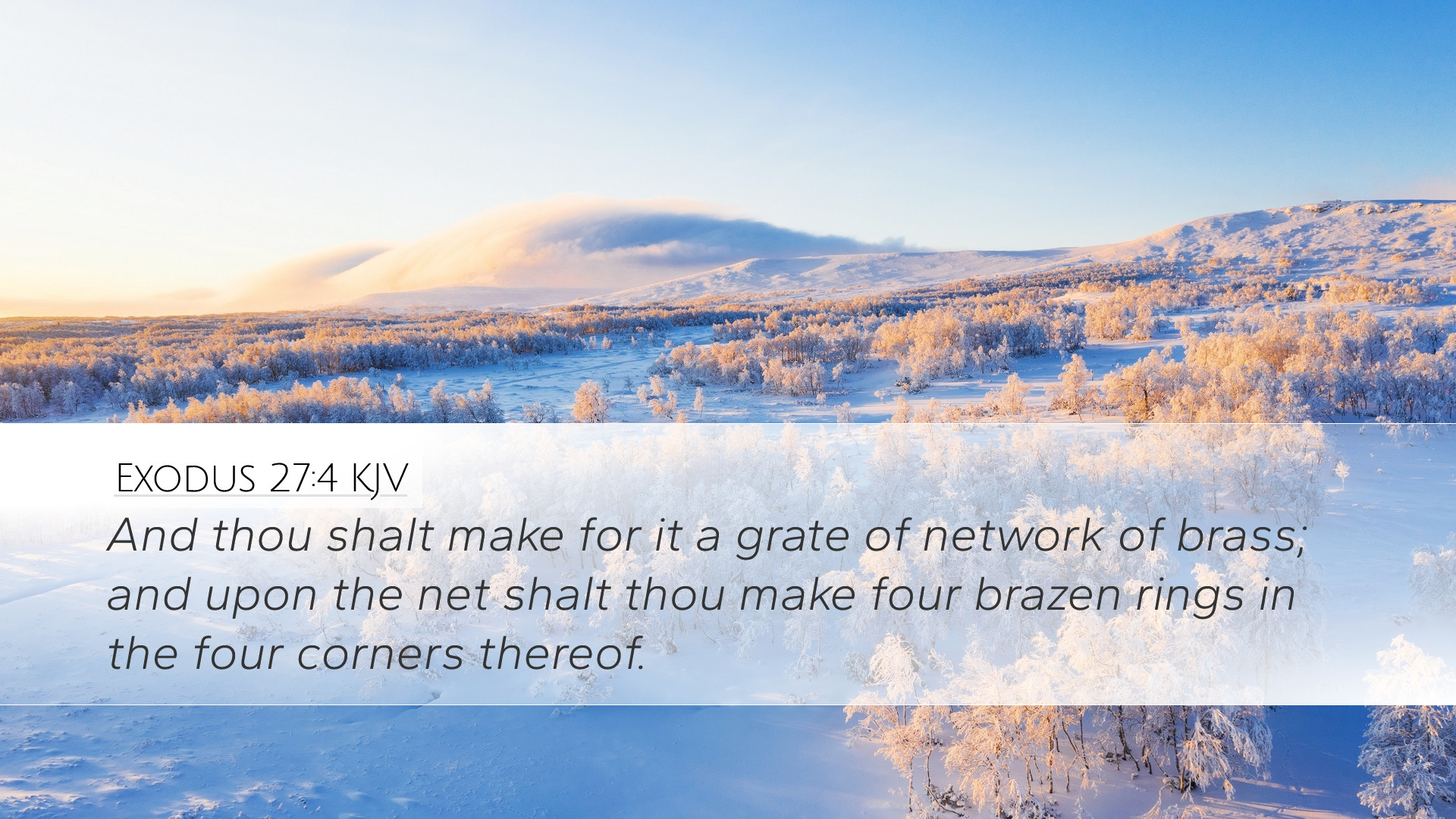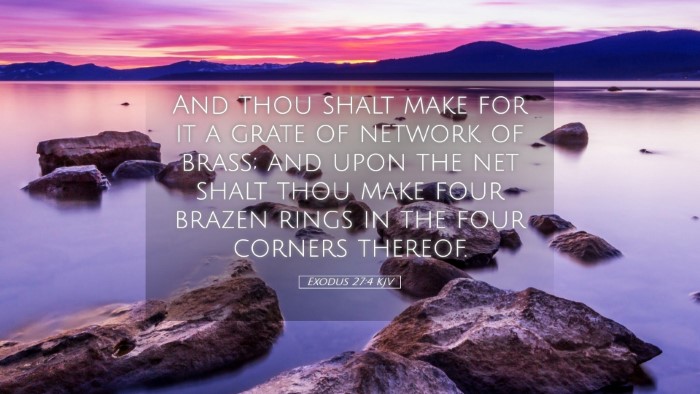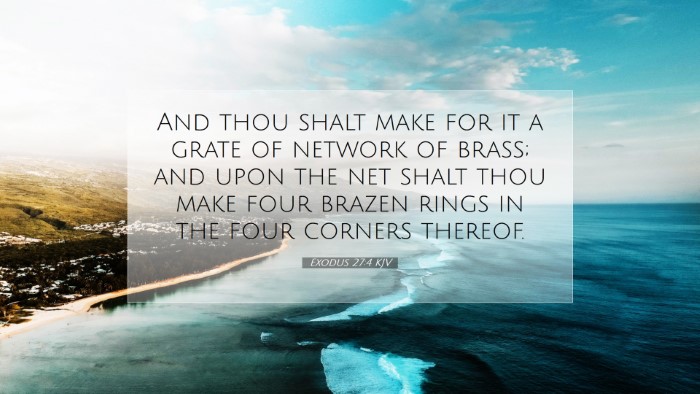Exodus 27:4 Commentary
Verse: "And thou shalt make for it a grate of network of brass; and upon the net shalt thou make four brazen rings in the four corners thereof."
Introduction
This verse forms part of the instructions for constructing the altar of burnt offering, specifically detailing the design of the grate that would be used in the sacrificial process. Exodus 27:4 emphasizes both the practical and symbolic aspects of the altar, which is central to the worship and sacrificial system of ancient Israel.
Insights from Public Domain Commentaries
Matthew Henry's Commentary
Matthew Henry provides a rich theological insight into the significance of the altar and its components. He notes that the creation of a grate of network signifies God's meticulous instructions for worship. The grate, made of brass, represents purity and refinement, indicating that offerings must be presented in a manner pleasing to God.
- Symbolism of Brass: As Henry elaborates, brass is often associated with judgment and strength in biblical texts. The use of brass for the grate reflects the seriousness of the sacrificial system—wherein God requires that sin be dealt with comprehensively and decisively.
- The Functionality of the Grate: The grate serves a functional role in the sacrificial process, allowing the flames to reach the offerings. This act of burning offerings symbolizes the purification and acceptance of gifts presented to God, as commentary notes that fire often represents God's divine presence and approval.
Albert Barnes' Notes on the Bible
Albert Barnes emphasizes the craftsmanship involved in the construction of the altar. He notes that the "grate of network" is not merely a utilitarian device but designed with care, ensuring that the offerings are wholly consumed by fire while allowing the ashes to fall through, streamlining the purification process.
- The Design and Structure: Barnes emphasizes the significance of the “four rings” at the corners of the grate, marking the points where it could be easily handled and transported. This point illustrates the nomadic lifestyle of the Israelites, indicating that their worship practices were fully integrated into their daily lives and their journey toward the Promised Land.
- Divine Instruction: Barnes points out that the detailed nature of God’s instruction to Moses conveys the importance of adhering to God’s commands in worship. Every element, including the dimensions and materials used, was significant and intentional, representing God's holiness and the seriousness with which Israel was to approach worship.
Adam Clarke's Commentary
Adam Clarke provides additional insights into the cultural and historical context of the altar and its grate. He expounds on the fact that the design reflects both practicality and beauty, indicating that worship should encompass both functionality and reverence. Clarke also mentions the spiritual insight that can be drawn from the act of sacrifice itself.
- Function as an Altar: Clarke explains that the sacrificial system was not merely about ritual; it was about establishing a relationship with God. The grate facilitates the burning of offerings, signifying the total surrender of the worshipper’s will to God. The physical act of burning reflects the desire to be consumed by God and to have sins dealt with through the purification process.
- Cultural Implications: Clarke illuminates the broader cultural significance of altar offerings in ancient Israelite society—how they were a means of atonement, communion, and gratitude before God. The grate becomes a focal point for this communal practice, highlighting God’s provision for sin and relationship restoration.
Theological Reflections
The examination of Exodus 27:4 reveals rich theological implications for both ancient worship and contemporary Christian practice:
- Holiness and Appropriateness in Worship: As these commentaries suggest, the details surrounding the grate illustrate the necessity of approaching God in ways that recognize His holiness and our dependency on His grace. Worship is community-centric, structured, and invites participants to recognize their place within God’s covenant.
- The Role of Christ as Our Altar: For Christians, the altar foreshadows Jesus Christ—the ultimate sacrifice. Just as the grate held the offerings that were consumed by fire, Christ's sacrifice was complete and all-consuming, enabling believers to draw near to God without fear.
Conclusion
Exodus 27:4 encapsulates profound truths regarding the nature of worship and sacrifice. By studying this verse through the lens of respected public domain commentaries, scholars and theological students gain a deeper understanding of the significance of details in God’s commands, the importance of worship, and the foreshadowing of Christ’s atoning work. This verse serves as a powerful reminder of God’s holiness and the gravity of our approach to Him in worship.


